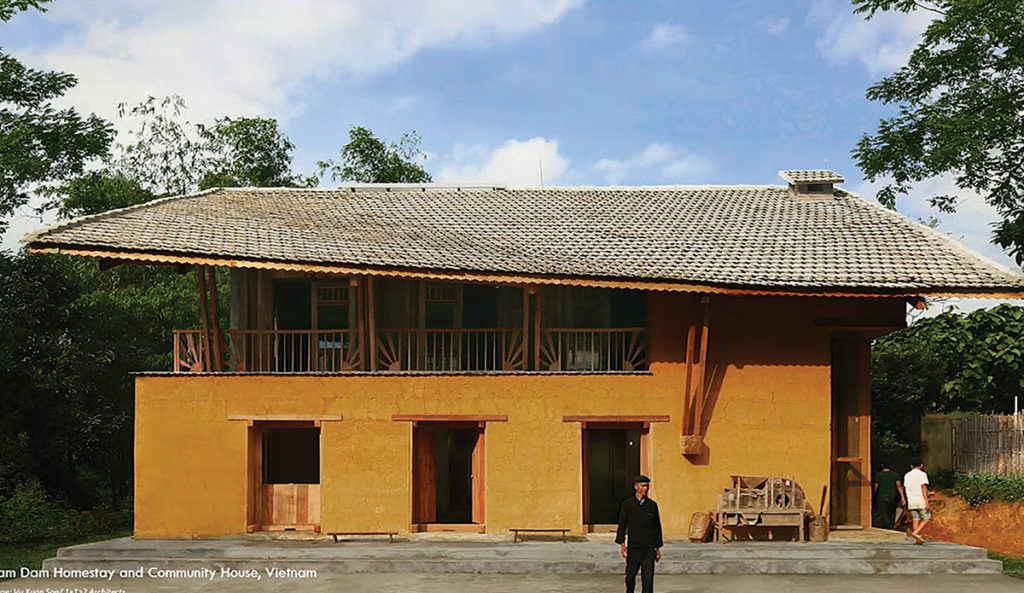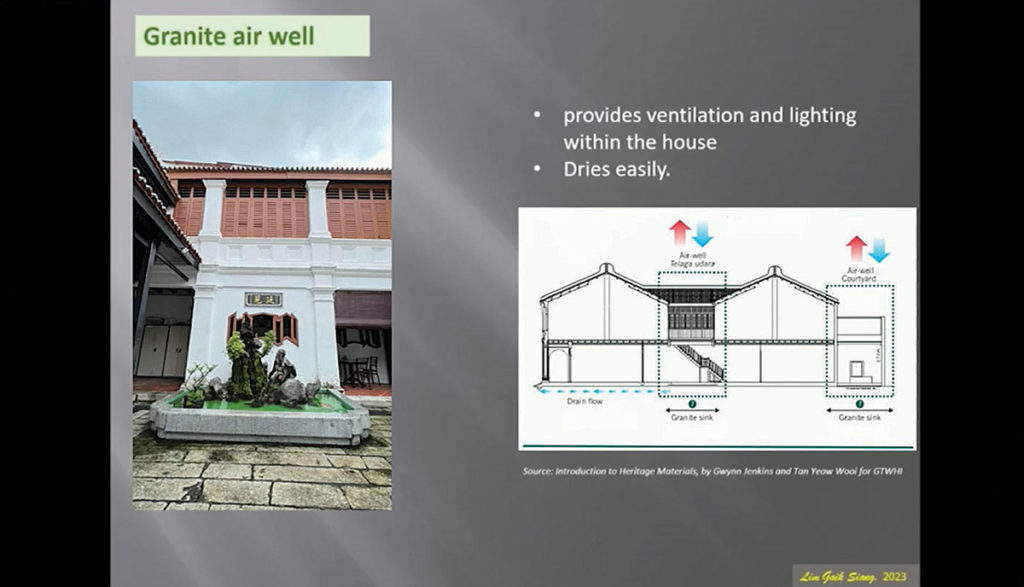2nd Quarter 2023
Cultural Wisdom for Climate Action: The Southeast Asian Contribution
June 19, 2023
Earlier this year, the Southeast Asian Cultural Heritage Alliance (SEACHA) held a conference titled Cultural Wisdom for Climate Action: The Southeast Asian Contribution, bringing together conservationists, architects and urban planners to discuss various aspects of the region’s heritage as a part of the strategy for climate action.
The panel titled Urbanisation and Built Environment investigated what the traditional designs of Southeast Asian buildings/cities can offer. It explored questions such as: Were traditional designs superior to modern design from the point of view of environmental stability? If so, why and to what degree? How does Southeast Asian urban design help or hinder approaches to climate action, and what traditional designs/patterns of urban living should be incorporated into policymakers’ responses to climate change?
Against unsympathetic development
Showing an image of polluted exhaust coming out of industrial chimneys, Lim Gaik Siang, President of The Penang Heritage Trust, asked the audience: “Is this so-called development?” Instead of merely using economic growth as a gauge, she argued that a more sustainable definition of development would be the improvement of life, both qualitative and quantitative—and more importantly, using available resources that are rooted in their specific contexts.
Lim drew examples from the shophouses of George Town, Penang to illustrate how organic building elements used in the past are much more sustainable than their modern counterparts. V-shaped terracotta roof tiles are porous yet naturally resistant to mould or bacteria, and are further arranged with small voids between the tiles for cross-ventilation.
While slower to apply, lime plaster and lime paint for walls are much more durable due to lime being inert to almost all chemical reactions, and thus able to withstand severe weather. Other features like air wells ensure the constant circulation of fresh air to counteract any humidity on the ground floor.
Meanwhile, modern large-scale developments tend to be “unsympathetic”—not only do they require energy-intensive appliances to maintain their own existence, but are also destructive towards their surroundings.
In George Town, a car park and shopping mall that were constructed with pile foundations and basement waterproofing had disrupted the underground hydrostatic pressure within a radius of 2 kilometres, damaging hundreds of heritage buildings in the area that cracked or even collapsed.
“That is why the definition of development is very important … Heritage conservation is Green and sustainable development, as it leaves more resources for future generations,” Lim summarised.
Carrying wisdom forward
Going beyond the historic revival that focused on aesthetics and forms, Leandro Poco, Managing Partner of Leonardo A. Poco & Associates Architects, used space syntax as a tool to examine Manila’s urban fabric, from colonial times to the contemporary Metro Manila sprawl.
“Space syntax exposes the underlying configuration between nodes and paths, which drives human social relations and interactions … it strips away the semantics and the semiotics and just looks at the pattern, and then you realise that there’s a reason why the meanings are there in the first place,” he said.
Interestingly, this research found that the colonial centre of Intramuros, which Poco called an “imposed order” was less accessible than a neighbouring trade district. “It’s placed in the centre, but no roads lead to it—all roads lead to Binondo, which is actually the world’s oldest Chinatown.”
Around the edges of the metropolis, Poco further identified suburban neighbourhoods that had untapped organic potential to become new walkable centralities, or “15-minute city bubbles”.
Looking at how vernacular sensibilities can be faithfully reinvented in the contemporary era, Dr Nirmal Kishnani, Associate Professor at the National University of Singapore’s College of Design and Engineering, presented the work of Hoang Thuc Hao, Principal of 1+1>2 Architects.
Following Vietnam’s national economic reform in the 1980s–90s called Doi Moi, large-scale migration to urban areas had taken place, resulting in ‘hollowed out’ rural areas and overcrowded cities.
Hoang dedicated his career to advance rural societies with projects such as Nam Dam Homestay and Community House, which explores local materials and forms while expressing a modern twist through impactful elements like the roof.
Finally, Sibarani Sofian, President of the Indonesia Urban Designer Institute shared his experience of planning Nusantara, the nation’s new capital city based on culturally-rooted values—although the plan has since faced constraints in its realisation.
For example, the original design prescribed meandering roads that were responsive to the hilly topography in order to minimise disruption to the soil. However, the actual construction on the ground disregarded such principles and instead imposed suburban-like rectangular clusters.
“We placed a heavy expectation on what needs to be done, but [it fell short] because of time, budget and quality—three things that are never in the ‘same place’,” Sibarani said.
He outlined how time constraints and political directives are the two biggest challenges in the implementation. “What we designed is not necessarily what is happening on the ground,” he mentioned. “If you want 10-minute walks, if you want to have 80 per cent public transport, you will have to leave behind the luxury of your car … It’s not going to be easy. Communicating these ideals are hard and it needs to come from the top level, [or else] the direction will be all over the place.”
Related stories:
Na Khoang School by 1+1>2 Architects

Headquarters of the Vietnam Institute for Advanced Studies in Mathematics

Read more stories from FuturArc 2Q 2023: Old is Gold!

To read the complete article, get your hardcopy at our online shop/newsstands/major bookstores; subscribe to FuturArc or download the FuturArc App to read the issues!
Previously Published Happening
Contact us at https://www.futurarc.com/contact-us for older articles.


